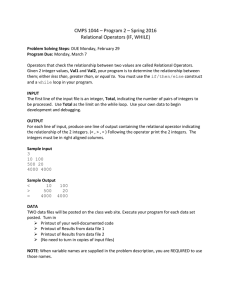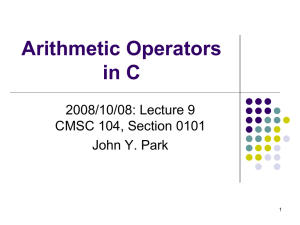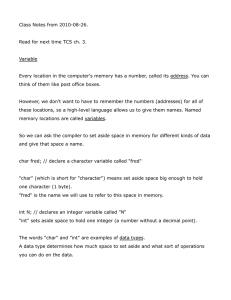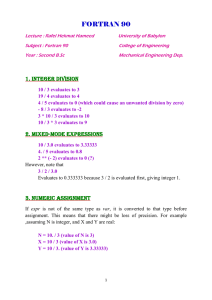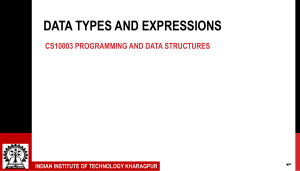Arithmetic Operations
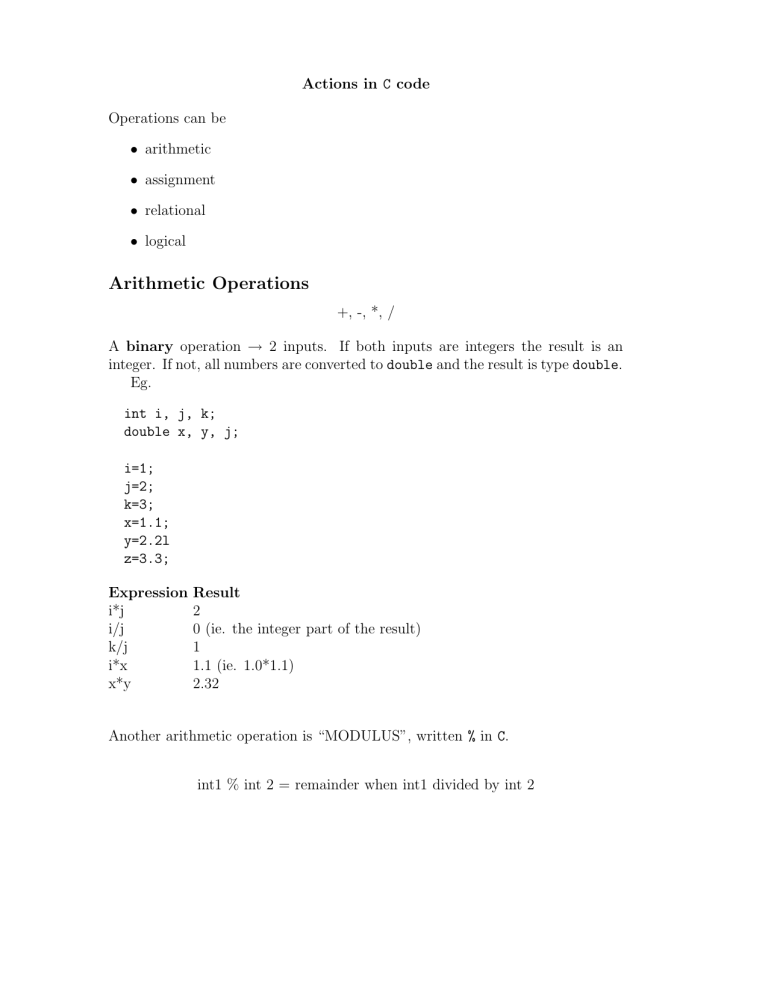
Actions in C code
Operations can be
• arithmetic
• assignment
• relational
• logical
Arithmetic Operations
+, -, *, /
A binary operation → 2 inputs. If both inputs are integers the result is an integer. If not, all numbers are converted to double and the result is type double .
Eg.
int i, j, k; double x, y, j; i=1; j=2; k=3; x=1.1; y=2.2l
z=3.3;
Expression Result i*j i/j k/j i*x x*y
2
0 (ie. the integer part of the result)
1
1.1 (ie. 1.0*1.1)
2.32
Another arithmetic operation is “MODULUS”, written % in C .
int1 % int 2 = remainder when int1 divided by int 2
−→ ONLY FOR POSITIVE INTEGERS. Eg. 5%3 = 2.
A unary operation → 1 input.
Eg. -x ie. -1.1 ; -j ie. -2.
and
++j which is equivalent to writing j=j+1 or --j which is equivalent to writing j=j-1 .
Assignment Operations
Eg.
k = i + j action: i + j is calculated and the result placed at k . If you mix types as in k = y + z , the result of y + z is 5.5 but only the integer part can be stored in k so the value 5 is placed at the memory location k .
Nb .
RHS is done first
Result is assigned to LHS
Relational Operations
numbers in, true/false out
In the processor FALSE = 0 and any bit pattern that is not FALSE is TRUE .
Convention in C is
FALSE = 0
TRUE = 1
See page 7 of the handout for a list of relational operators. Eg. ¡, ¿, ==, !=, ¿=,
¡=. Eg i < j is TRUE = 1 i > j is FALSE = 0 i == j is FALSE = 0 x > i is TRUE = 1
Can make more complicated expressions using parantheses ie (). Eg.
x > ( y + z ).
Whatever is in brackets is done first: y + z = 5 .
5 then x > 5 .
5 is FALSE = 0.
Logical Operators
true/false in, true/false out
&& is logical AND
— — is logical OR
!
is logical NOT
Eg
( x > y )
( F ALSE )
&&
&&
F ALSE = 0
( x < z )
( T RU E )
( x > Y )
( F ALSE )
||
||
T RU E = 1
( x < z )
( T RU E )
For reference the truth table for logical operators is p q && ——
T T T T
T F F T
F T F T
F F F F p !p
T F
F T
